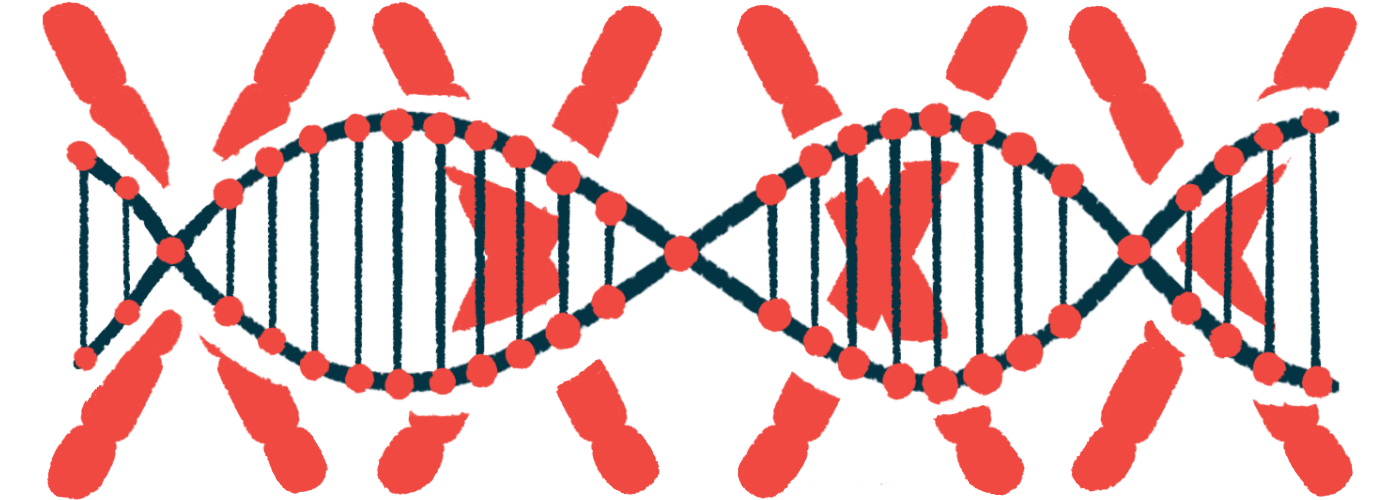New gene mutation a likely cause of spondylodysplastic EDS in girl, 7
Unreported mutation maps to SLC39A13 gene in spEDS case study

A young girl with short stature due to spondylodysplastic Ehlers-Danlos syndrome (spEDS) was found to carry two copies of a new gene mutation that likely is disease-causing, a report from India says.
The previously unreported mutation maps to the SLC39A13 gene, which has been linked to this type of EDS.
“This is the first report [of SLC39A13-related spEDS] from India to the best of our knowledge,” the researchers wrote, adding that their findings may help widen the “spectrum of clinical presentation.”
The report, “A case of Ehlers-Danlos syndrome presenting as short stature: a novel mutation in SLC39A13 causing spondylodysplastic Ehlers–Danlos syndrome,” was published in the journal Oxford Medical Case Reports.
New mutation found in girl with short stature, other spEDS symptoms
EDS is a group of diseases of the connective tissue, which supports all the other types of tissues in the body. There are several types of EDS, and they may share some symptoms.
Like people with other types of EDS, those with spEDS have joints that are hypermobile or unusually flexible, and skin that can be stretched beyond normal. Major criteria for a spEDS diagnosis include short stature and a weak muscle tone, while minor criteria may involve skin changes, having a flat foot, and delayed motor development.
SpEDS is caused by mutations in the B4GALT7, B3GALT6, or SLC39A13 gene. It is inherited in an autosomal recessive pattern, which means that the disease occurs when a child receives one copy of a mutated gene from each parent.
The SLC39A13 gene codes for a protein that helps zinc travel in cells. Zinc is abundant in connective tissue, where it may help the tissue stay healthy. The literature reports about a dozen cases of spEDS linked to mutations in the SLC39A13 gene.
All appear to have some additional features in common. They include protuberant eyes with bluish sclera — meaning a bluish tint to the eyeball’s white outer layer — unusually stretchy skin, finely wrinkled hand palms, tapered fingers, and a number of characteristic imaging findings.
Now, a group of researchers in Mumbai reported a new mutation in the SLC39A13 gene that was the likely cause of spondylodysplastic EDS in a 7-year-old girl.
The girl was born with megalocornea, which is when the transparent layer that covers the front of the eye is too large. Her sclera was bluish. She was monitored closely for eye problems, yet there was no vision loss.
When the girl had a regular checkup at the hospital at age 9 months, she was found to have hypotonia or low muscle tone and a delay in gross motor skills.
An MRI of the brain revealed white matter changes suggestive of metachromatic leukodystrophy, a disease that causes a type of fats to build up in nerve cells.
Occupational therapy and physiotherapy helped her gain control of some gross motor skills over the years, but at some point she stopped returning for care or a checkup.
At age 7, she returned to the hospital, and this time had signs of short stature, an abnormal gait, and hypermobile joints. A physical examination revealed that the initial delay in gross motor skills was no longer present. However, there was a mild hypotonia that resulted in a waddling gait. She also had unusually stretchy skin, finely wrinkled hand palms, and flat feet, known as pes planus.
To zero in on the reason for her short stature, the girl underwent a battery of tests. However, the results came back normal. Moreover, her megalocornea had not changed significantly since birth.
However, “her bone age was of 6 years and height age was of 4 years … at age of 7 years,” the researchers wrote.
Genetic testing revealed that the girl carried two copies of a mutation in the SLC39A13 gene that had never been reported in the literature. The mutation, called c.682G > A, results in one amino acid (a protein’s building block) being replaced by another.
A computer simulation revealed that this change may be enough to cause the disease. Based on these findings, a diagnosis of spondylodysplastic EDS was made.
We report a novel gene missense mutation in exon 6 of the SLC39A13 gene leading to EDS.
Further X-ray images revealed small ilia, which are the wide, broad bones forming the upper part of the pelvis, a wide and short femoral neck — a part of the thigh bone. The images also showed platyspondyly, or a widening of the vertebra that shortens the space between them.
“What is new is discovery of association of white matter changes,” the researchers wrote, adding, “We report a novel gene missense mutation in exon 6 of the SLC39A13 gene leading to EDS.”
The patient, meanwhile, “is being regularly screened and evaluated for development milestones, vision and growth,” the team wrote.







